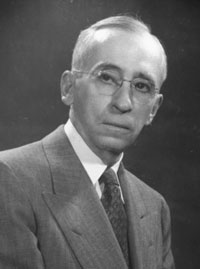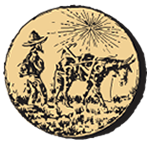Mining and Minerals Education Foundation |

Thomas Garfield Chapman
(1886-1965)
2012 Inductee from Mining's Past
Extractive metallurgist, inventor, and professor. Thomas G. Chapman was born in Spring Hill, Nova Scotia, Canada on September 21, 1886.He grew up in Boston and graduated from the Massachusetts Institute of Technology with a B.S. in Metallurgy in 1909.
He started his career as an Instructor at MIT for three years, and then joined the Michigan College of Mines (now Michigan Technological University) as an Instructor, then Assistant Professor of Metallurgy. Four years later, in 1916, he moved to Tucson as Assistant Professor of Mining & Metallurgical Engineering at the University of Arizona. After completing the requirements for a Master's of Science degree at the University of Arizona in 1924, he was granted a sabbatical leave for the academic year 1924-1925 to complete his doctorate at MIT. In 1925 he was awarded a Sc.D. from MIT. Dr. Chapman was appointed head of the University of Arizona Department of Mining Engineering and Metallurgy in 1928 and became Dean of the Graduate College in 1938.
In 1914, at the time of the establishment of colleges at the University, since mining and metallurgy were both engineering programs, the School of Mines became the College of Mines and Engineering. In 1940, the Phelps Dodge Corporation requested that a College of Mines be created with Engineering as a separate college with Dr. Chapman as Dean of the new college. Thus, in 1940, Chapman became Dean of the College of Mines and Director of the Arizona Bureau of Mines, positions he held until 1957 when he retired after 40 years of service.
Owing to his extensive knowledge of chemical metallurgy, Chapman established a Chemical Engineering degree program in the College of Mines – a program that had been turned down by the College of Engineering due to the lack of a chemical industry in the State.
In addition to his academic work, during his career he was a consultant to the US Bureau of Mines, American Smelting and Refining Co., Phelps Dodge Corp., and Calumet & Arizona Mining Co.
Professionally he made significant contributions in mineral processing of low-grade copper ores and extractive metallurgy, especially in the field of hydrometallurgy. He received three patents (one solely in his name, two others in collaboration with others) for the recovery of gold from cyanide solutions using carbon. His work laid the groundwork for CIL (carbon-in-leach) and CIP (carbon-in-pulp) - technologies used today in gold recovery. A scholarship in his name exists today in The University of Arizona College of Engineering from funds donated by his former students.
Print Version Previous Archive Next
